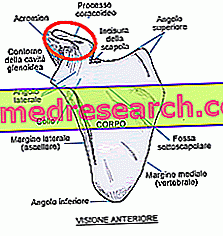Generality
Omega 3s are essential fats.
They perform many essential functions for maintaining health and provide various metabolic benefits, which have a positive effect on heart health.

They are all present in the diet, even if in different foods and different quantities; EPA and DHA tend to be more deficient than ALA, from which however the body is able to obtain them.
Omega 3 and Triglycerides
The nutritional intake of omega 3 is linked to lipemia, in particular to the amount of triglycerides in the blood.
A significant intake of alpha linolenic acid and eicosapentaenoic acid tends to decrease triglyceridemia .
It is one of the most important functions of omega 3; this effect is proven and recognized by research institutes around the world.
- The hypotrigliceridemizing action of omega 3 is visible, as well as with the decrease of total triglycerides, also with the decrease of certain transport lipoproteins (in particular those with low density).
- This effect could be the result of three different mechanisms:
- Fatty acid reduction, perhaps due to the increase in beta cell oxidation (consumption of lipids in mitochondria to produce energy)
- Reduction of the flow of free fatty acids to the liver
- Reduction of fatty acid synthesis in the liver.
- Although EPA and DHA perform differentiated and highly specific biological functions, they are both endowed with a hypoglyceridemic power.
The American Heart Association claims that:
- "Those who need to reduce blood triglycerides should consume 2-4 g of EPA and DHA per day in the form of supplements."
- NB . The chemical form of omega 3 used in the most recent studies is the "ethyl ester", that is the same used for the production of supplements.
Omega 3 and Cholesterol
We have already said that omega 3 plays a positive role in lipemia.
By "lipemia" we mean the "total amount of lipids in the blood", that is the sum of: fatty acids or triglycerides, phospholipids, cholesterol, lecithins and other secondary compounds.
On the other hand, the action of omega 3 is specific for triglycerides and not for cholesterol.
The administration of omega 3 does not appear to significantly alter the levels of LDL (commonly called bad cholesterol), HDL (also known as good cholesterol) and total blood levels.
However the results of the inherent studies are still contradictory and can change based on many variables.
Omega 3 and Heart Health
The intake of omega 3 is considered protective against cardiac health .
The American Heart Association recommends the following:
- Individuals with no medical history of coronary artery disease or myocardial infarction should consume oily fish or fish oil twice a week.
- Those who have been diagnosed with coronary heart disease or have had a heart attack should consume 1 g of EPA and DHA per day from fatty fish or food supplements.
However, certain insights challenge the cardio-protective effect of omega-3s.
Not always taking ALA, EPA and DHA markedly improves the risk for heart disease (assessed on hospital admissions, episodes of heart attack, cardiac death, etc.).
Nevertheless, there is indisputable evidence regarding the positive effect of omega 3 on many risk factors related to cardiovascular diseases. For example:
- Reduce triglyceridemia
- They reduce blood pressure, both in normal people and in those with primary arterial hypertension
- Reduce the damage associated with chronic hyperglycemia
- Anti-inflammatory factors increase
- They fluidize the blood and decrease the tendency to coagulation
- Improve circulation, etc.
The most recent studies show less effective supplements than a balanced diet; however it is necessary to wait for further investigations to understand the reason.
The nutritional supplementation of omega 3 cannot totally compensate for an unbalanced diet, but pharmaceutical and over-the-counter products (especially with DHA and EPA, contained in fish oil, algae, krill, etc.) are considered useful for reach the minimum requirement of the least present essential fatty acids.
Shortage: Is it possible?
For the reasons we have described above, it is necessary to take omega 3s in the right quantities, avoiding their nutritional deficiency.
The human body "should" be able to effectively derive EPA and DHA from ALA (more abundant in food).
On the other hand, for various reasons (malabsorption, enzymatic insufficiency, etc.) this capacity can be compromised. In this case, a nutritional deficiency may occur and it becomes necessary to increase the nutritional intake of EPA and DHA.
To avoid the lack of all omega 3, it is advisable to follow some advice:
- Remember to equally treat alpha linolenic acid intake by eating vegetables, fruits, whole grains, legumes and other seeds regularly. Many overlook the fact that the "natural" source of ALA is the sum of all these foods, not the oil that can be made from them.
- Eat 3-4 portions of fish per week, preferably small (limit consumption of tuna slices, swordfish, etc.) and catch (avoid, if possible, the consumption of farmed fish). It is rich in EPA and DHA.
"Fish" is not synonymous with "fishery products"? Molluscs and crustaceans do not provide the same nutritional contribution as the "thorn fish".
- Replace a small portion of the traditional dressing with ALA-rich seeds and / or related cold-pressed oil, used raw and well preserved.
An oil (but also another food or supplement) potentially rich in omega 3, when exposed to light, heat, open air, cooked or simply "old", no longer has the same nutritional characteristics.
- If necessary, complete the diet using a dietary supplement, preferably based on DHA (fish oil, seaweed oil, krill oil). In this regard, keep in mind that compared to any derivative, foods benefit from greater stability and conservation (thanks to the presence of antioxidants such as vitamins A, C, E, zinc and selenium). On the other hand, they are less concentrated and require more attention and continuity in recruitment.



